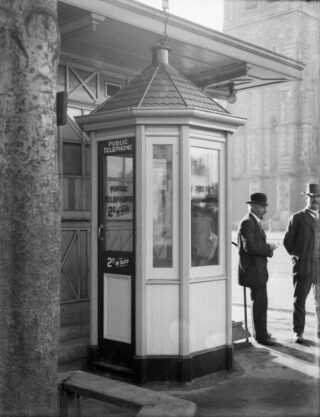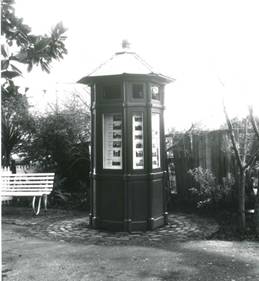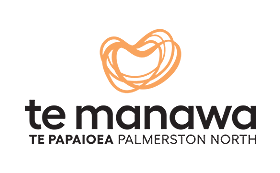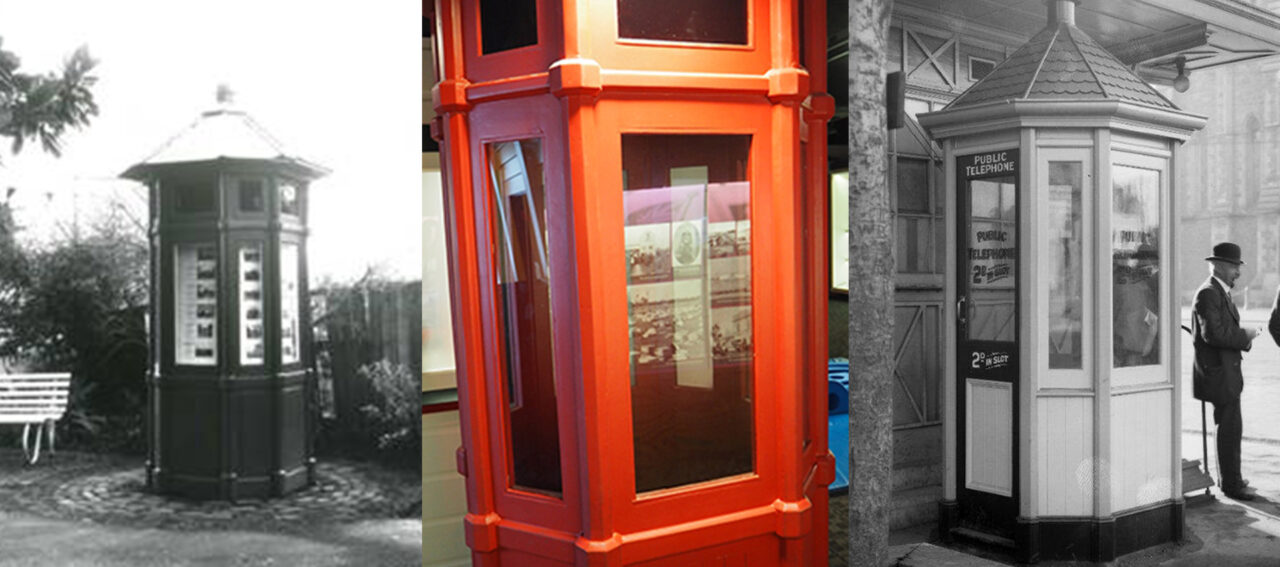Museums often house preserved examples of endangered or extinct species. Te Manawa’s collection includes tui, kereru – even a huia. Yet it is to a different kind of rarity that we turn our eyes today, one that’s now so scarce you’re more likely to see it in an episode of Dr Who than anywhere else.
The telephone box that until 2018 lived in our Manawatū Journeys exhibition is a bit different from what you might imagine when you hear “phone box”. It’s red, yes, but it’s also octagonal, and it has a tiled roof not unlike a tiny house.
New Zealand installed its first public telephone boxes in 1910. It cost tuppence to make a call. While a telephone system had been in place in Palmerston North since the late 19th century, only the well-off could afford to use it.
Te Manawa’s phone box began life in 1920 or 1921 on the corner of Featherston and Waldegrave Streets. Here it stayed for more than fifty years, resisting replacement by the more familiar square red boxes, made of cast iron, which began arriving in 1935.
In 1977 it moved to Fitzherbert Avenue. The City Council designated it a heritage structure in 1979 and for almost another twenty years it lived a now-iconic existence outside Colin Cook Real Estate.
In 1995 vandals struck and the phone box found itself upended. Deemed no longer suited to a life on the streets, it was sent to what was then the Science Centre & Manawatu Museum for safe-keeping.
It had been on display since Te Manawa’s big redevelopment in 2010, having undergone restoration work, although its roof had to remain in the collection store – the gallery simply wasn’t tall enough to accommodate it. With the refresh of the Manawatū Journeys gallery, its place was taken by a new interactive phone booth, and it was reunited with its roof in storage once more. The City Council has transferred ownership to the museum.
The replacement programme that began in 1935 turned the earlier model phone booth into a rarity. Ours is the only example of its type registered with heritage websites in New Zealand. Replicas of this particular booth model have been made and can be seen in Whanganui and, appropriately, Dunedin’s Octagon.
The rise of mobile phone technology has made phone booths of any kind into museum exhibits. Museum visitors of the near future might soon be seeing “modern” booths on display as relics of the past.

A similar phone booth on the streets of Christchurch, c.1912

The Te Manawa phone booth after its move to Fitzherbert Avenue.




